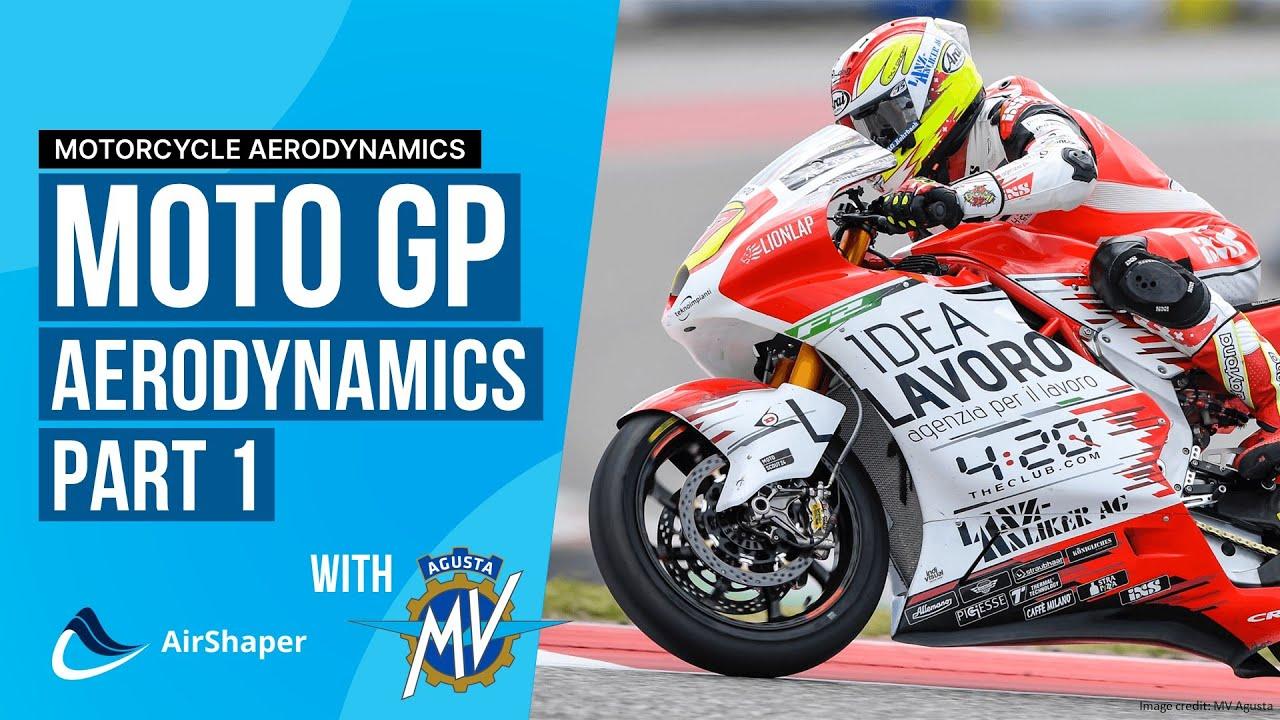Race Talk with MV Agusta - Top Aerodynamic Priorities for moto GP bikes

Race Talk with MV Agusta - Top Aerodynamic Priorities for moto GP bikes
Part 2 of this interview: https://youtu.be/fGNdMaVft_w
For more videos on motorbike aerodynamics:
- Motorbike wheelies: https://youtu.be/M2Z_GuLHmHs
- AMA superbikes: https://youtu.be/qrH_QBOrqbw
- Damon motorcycles - electric motorbikes: https://youtu.be/asYdvFfzHTs
MV Agusta is one of the teams competing in the MOTO GP - moto2 race class. In this interview, technical director Brian Gillen reveals the top priorities when it comes to race bike/motorbike aerodynamics.
Brian Gillen
Brian is originally from Buffalo, New York, America. He grew up in a family that had a multi-line motorcycle dealership for over 40 years, selling Italian motorcycle brands (Ducatti, MV Agusta, ...), Swedish brands (Husqvarna), German brands (Maico), ...
He's now technical director of the R&D group at MV Agusta: engine design/testing, vehicle design/testing, homologation, styling.
Moto 2
MV Agusta joined the moto2 championship in 2019 with an official team with their technical partner FORWARD RACING (www.forward-racing.com). In 9 months time, they designed a completely new bike from the ground up.
MV Agusta had been following the moto2 series and when the new 3-cylinder engine was introduced, this was a good time for them to get on board: they had been competing with a 3-cylinder racebike in the world championship world supersport. They had a good understanding of what makes a motorbike powered by a 3-cylinder engine perform well.
Aerodynamics
To make the difference within the tightly regulated race class (standard electronics, tires, ...) they looked for areas where they could make a difference and aerodynamics was one of them. Main aspects:
- Coefficient of drag: most want to reduce the coefficient of drag to increase the top speed. But the amount of time you spend over an entire lap at top speed, with wide-open throttle and high rpm, is very limited. Even big gains in top speed advantage result in a limited overall lap time advantage.
- How not to benefit your competitor: on a straight line, people try to get in behind you to go faster by drafting.
- Rider comfort: the engine dissipates a lot of heat and in ambient temperature conditions (like in Thailand) this decreases the mental performance of the rider. Keeping the rider cool is very important to keep his/her mental performance high. A better thermal comfort, relative to the competition, is a strong advantage for the rider.
- Wind buffeting: the air coming off the wind screen can be highly turbulent with frequencies around 20Hz for example which can shake the head of the rider. This reduces the focus, reducing the capability to detect the correct braking point. With just hundreds of seconds to decide on when to brake, this is very crucial.
----------------------------------------------------------------------
The AirShaper videos cover the basics of aerodynamics (aerodynamic drag, drag & lift coefficients, boundary layer theory, flow separation, reynolds number...), simulation aspects (computational fluid dynamics, CFD meshing, ...) and aerodynamic testing (wind tunnel testing, flow visualization, ...).
We then use those basics to explain the aerodynamics of (race) cars (aerodynamic efficiency of electric vehicles, aerodynamic drag, downforce, aero maps, formula one aerodynamics, ...), drones and airplanes (propellers, airfoils, electric aviation, eVTOLS, ...), motorcycles (wind buffeting, motogp aerodynamics, ...) and more!
For more information, visit www.airshaper.com


